STRAVA MUST DO RIDES: TOKYO
Client Strava
Year 2019
Year 2019
Our Must Do Rides series features some of the best routes around the world. This ride comes from Tokyo, Japan. Written by Lee Basford and Caitlin Ford.
In Tokyo’s vast metropolis almost any ride involves people traveling from all areas of the city, depending on the starting point. Among cyclists here, Okutama is a known standard, a mountainous paradise located to the far west of the city, but still part of Tokyo. It’s entirely possible to ride the 50km or so from central Tokyo along the Tama River, and many do. But to make the most of the mountains a better option is the Rinko bag, a lightweight bike cover that allows you to make the most of Japan’s fast and efficient railway network by taking you and your bike directly there, avoiding the endless suburbs and traffic lights.
The starting point for our ride is Musashi-Itsukaichi station at the base of the mountains, where we meet the other riders, all traveling by different routes. If you’re leaving from downtown Tokyo, getting an early start from Shinjuku station can often mean navigating streets of people heading home, a little worse for wear after a night out in this notorious area of the city and an eye-opening glimpse into a part of Japanese life.
In Tokyo’s vast metropolis almost any ride involves people traveling from all areas of the city, depending on the starting point. Among cyclists here, Okutama is a known standard, a mountainous paradise located to the far west of the city, but still part of Tokyo. It’s entirely possible to ride the 50km or so from central Tokyo along the Tama River, and many do. But to make the most of the mountains a better option is the Rinko bag, a lightweight bike cover that allows you to make the most of Japan’s fast and efficient railway network by taking you and your bike directly there, avoiding the endless suburbs and traffic lights.
The starting point for our ride is Musashi-Itsukaichi station at the base of the mountains, where we meet the other riders, all traveling by different routes. If you’re leaving from downtown Tokyo, getting an early start from Shinjuku station can often mean navigating streets of people heading home, a little worse for wear after a night out in this notorious area of the city and an eye-opening glimpse into a part of Japanese life.

At 7am in Shinjuku, the best place to get coffee near the station is Berg, an old school café and local institution. With a few simple changes along the way, the train from Shinjuku takes a little over an hour before reaching our destination and meeting fellow riders. In the area surrounding the exit you witness a visual study of how the often overworked Japanese spend their free time trying to escape the urban density: groups carrying crash pads for bouldering, groves of genki elderly in perfect hiking ensembles, or simply families out for a day in the mountains.
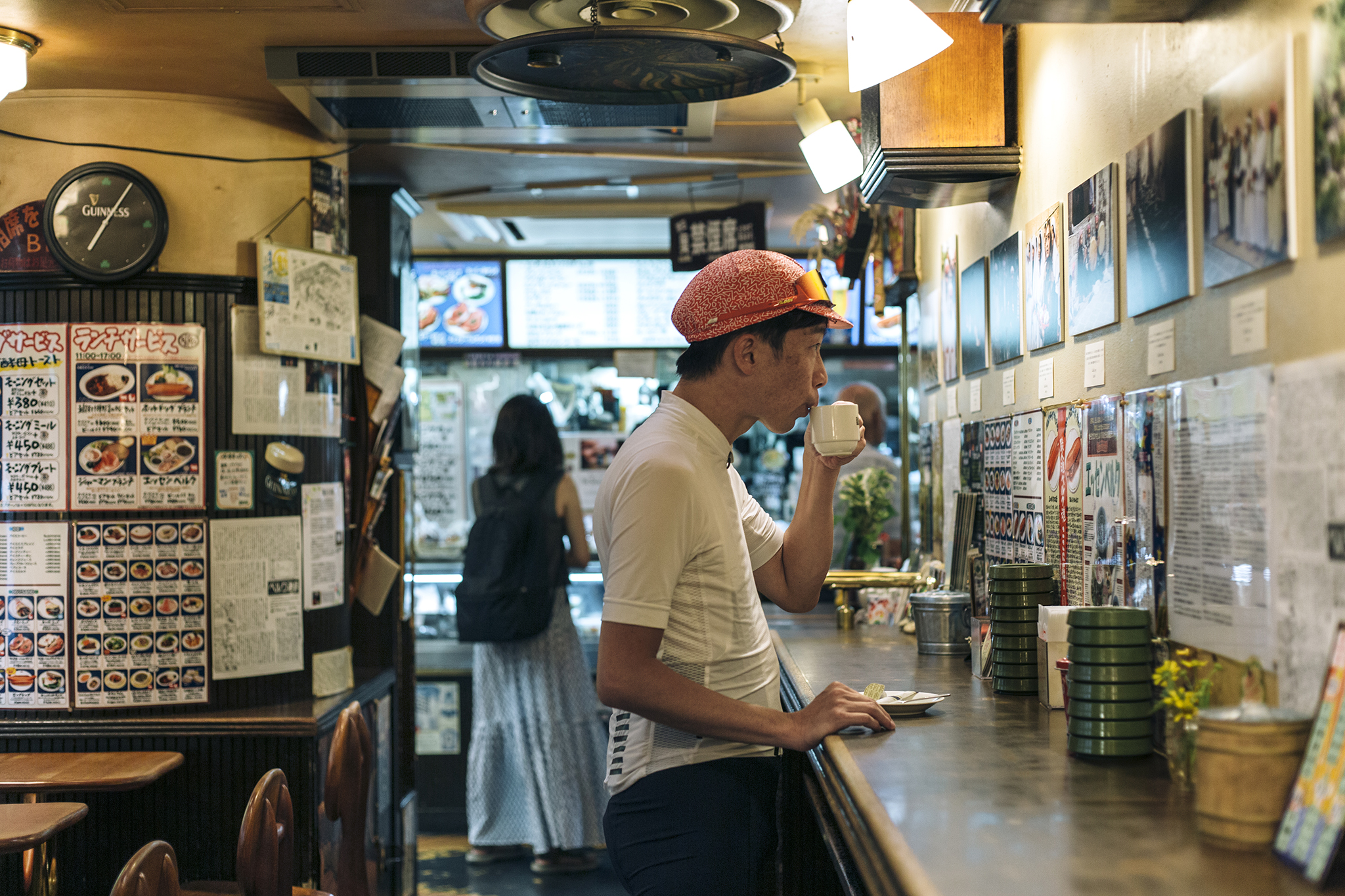

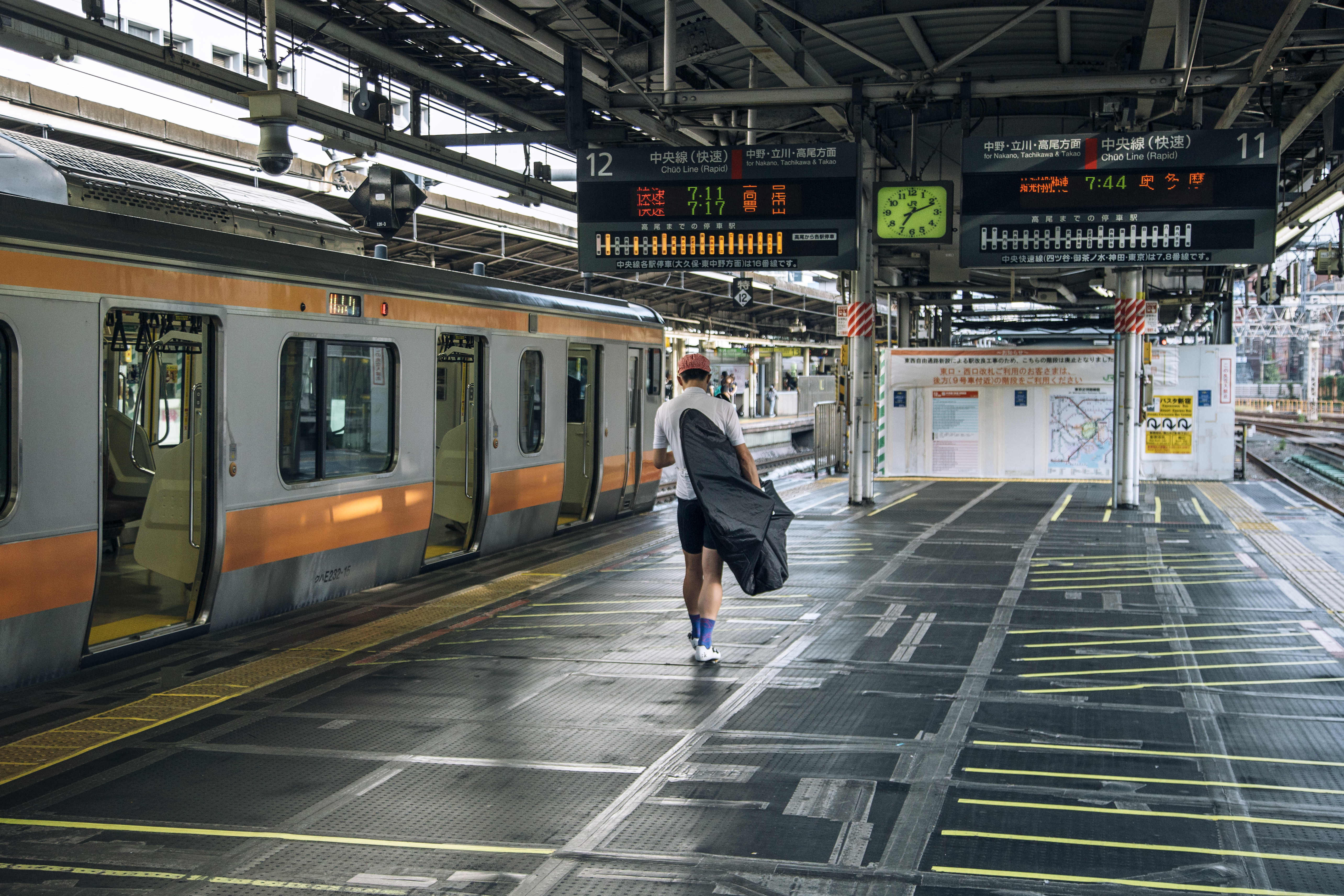
The Route
Heading out from the station, we stopped by the last conbini (convenience store) before the start of the ride. As anyone who has ever traveled to Japan will have discovered, the conbini is often a safe haven mid-ride, guaranteeing not only lunch but fresh coffee and a clean bathroom. Next to this conbini is a stairwell that leads up to a backroad for some respite from cars, and with its shaded canopy, the sun. On this road, you get the feeling that Okutama is an enclave, almost entirely surrounded by mountains and trees, the road is a cyclist’s highway with numerous exits leading to brutal but amazing climbs.
Heading out from the station, we stopped by the last conbini (convenience store) before the start of the ride. As anyone who has ever traveled to Japan will have discovered, the conbini is often a safe haven mid-ride, guaranteeing not only lunch but fresh coffee and a clean bathroom. Next to this conbini is a stairwell that leads up to a backroad for some respite from cars, and with its shaded canopy, the sun. On this road, you get the feeling that Okutama is an enclave, almost entirely surrounded by mountains and trees, the road is a cyclist’s highway with numerous exits leading to brutal but amazing climbs.
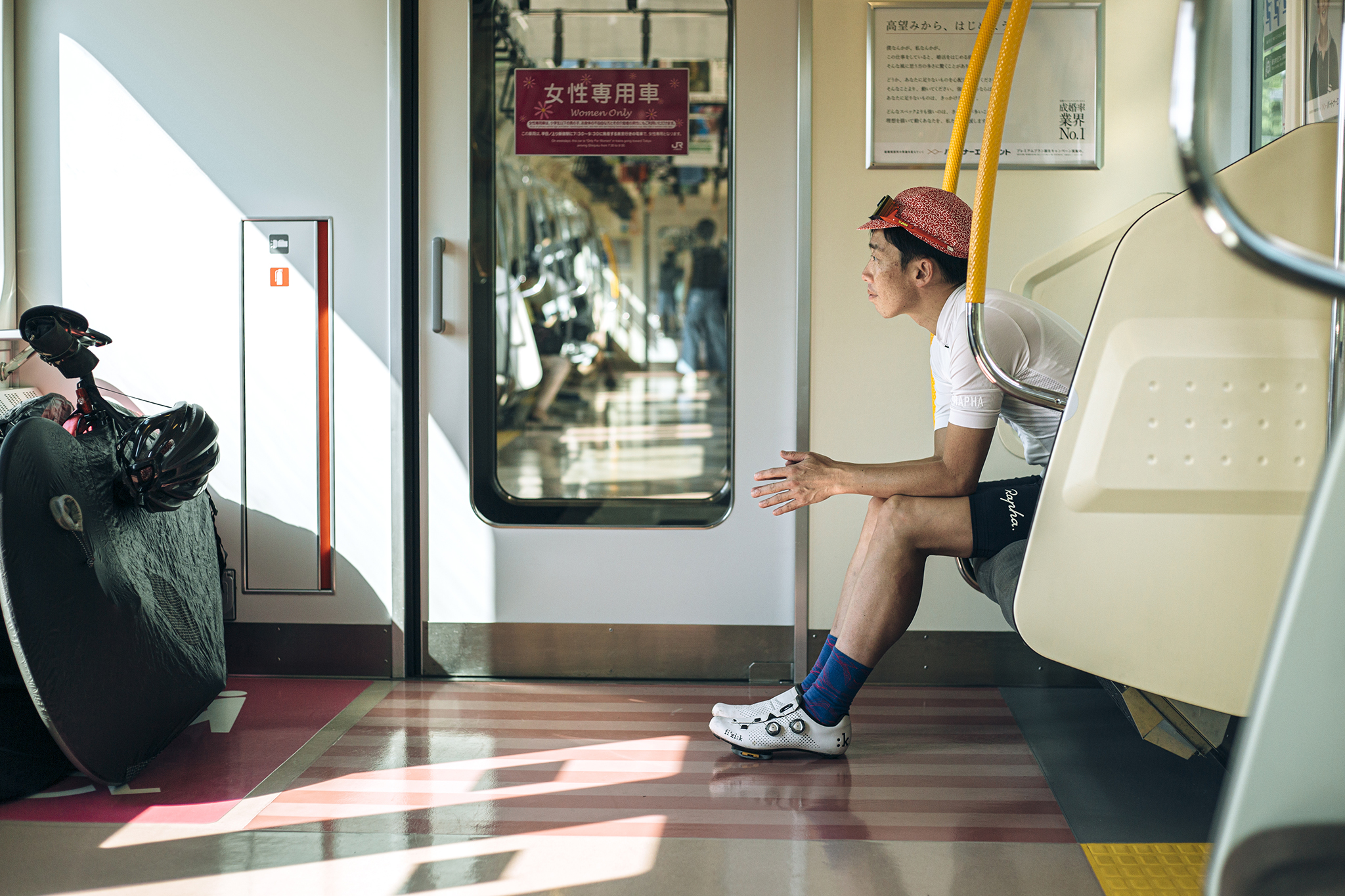
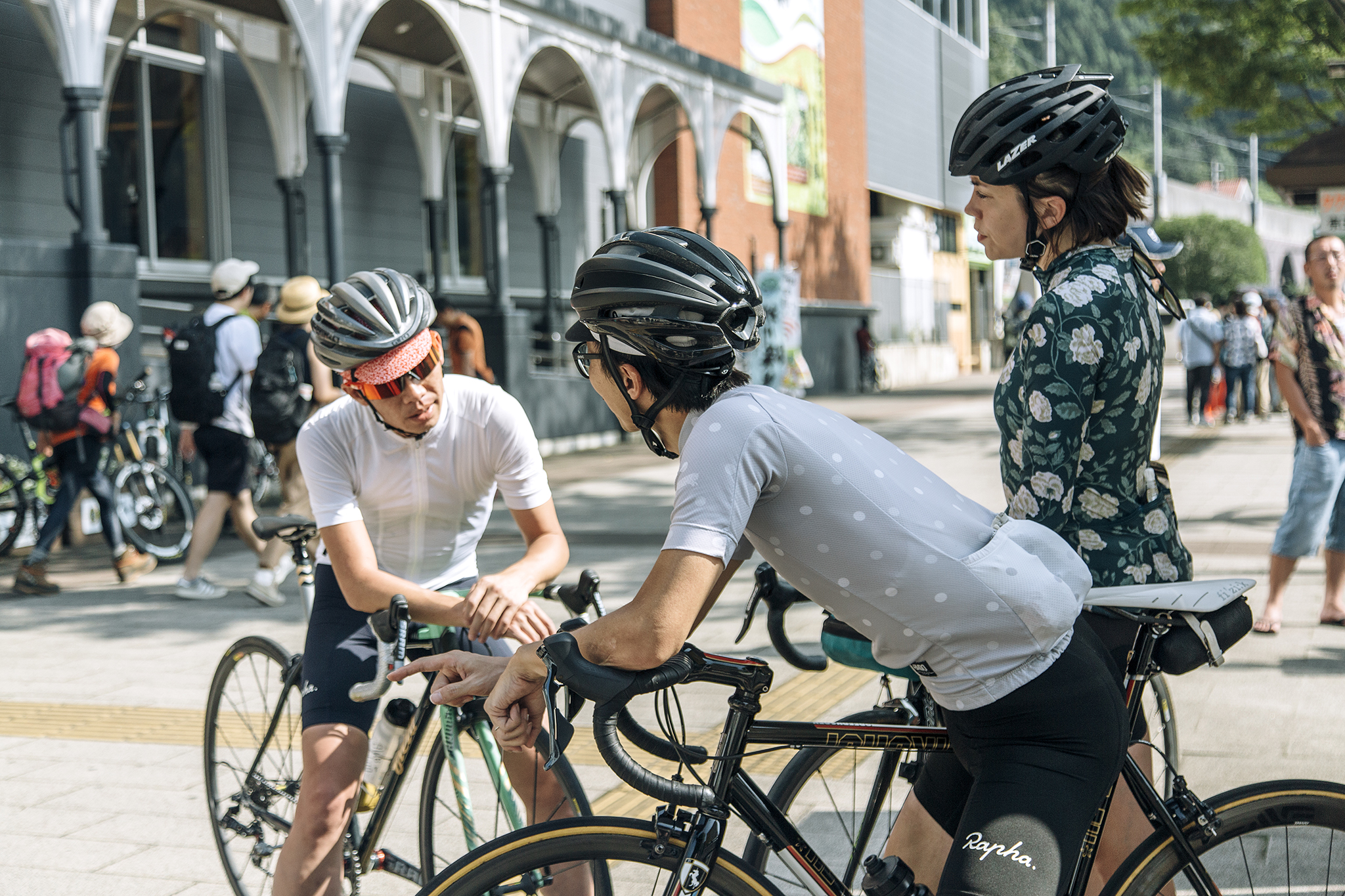

The Ride
Our first stop after a relatively easy start is Chitoseya, a small store that makes fresh handcrafted tofu, donuts and a variety of ice cream, all made from tofu and perfect in the intense Japanese summer. To the left of the tofu shop, there’s a road that leads to our first real challenge of the day. Tokisaka pass is reached in just under 4km of climbing a narrow road with almost no traffic and beautiful komorebi as the sunlight spills through the trees.
Soon after the pass, there’s a sign that goes to a gravel trail leading to a remote building over 400 years old (a rarity for a place so ridden with earthquakes). The small restaurant, recently renamed Setozawa, has been in the family for generations and all that seems to have changed is the menu which now serves a selection of filling Japanese summer desserts. Family pictures are hung everywhere, undulating across the walls with little precision, and there is not one but two very old sunken ‘irori’fireplaces.
Our first stop after a relatively easy start is Chitoseya, a small store that makes fresh handcrafted tofu, donuts and a variety of ice cream, all made from tofu and perfect in the intense Japanese summer. To the left of the tofu shop, there’s a road that leads to our first real challenge of the day. Tokisaka pass is reached in just under 4km of climbing a narrow road with almost no traffic and beautiful komorebi as the sunlight spills through the trees.
Soon after the pass, there’s a sign that goes to a gravel trail leading to a remote building over 400 years old (a rarity for a place so ridden with earthquakes). The small restaurant, recently renamed Setozawa, has been in the family for generations and all that seems to have changed is the menu which now serves a selection of filling Japanese summer desserts. Family pictures are hung everywhere, undulating across the walls with little precision, and there is not one but two very old sunken ‘irori’fireplaces.
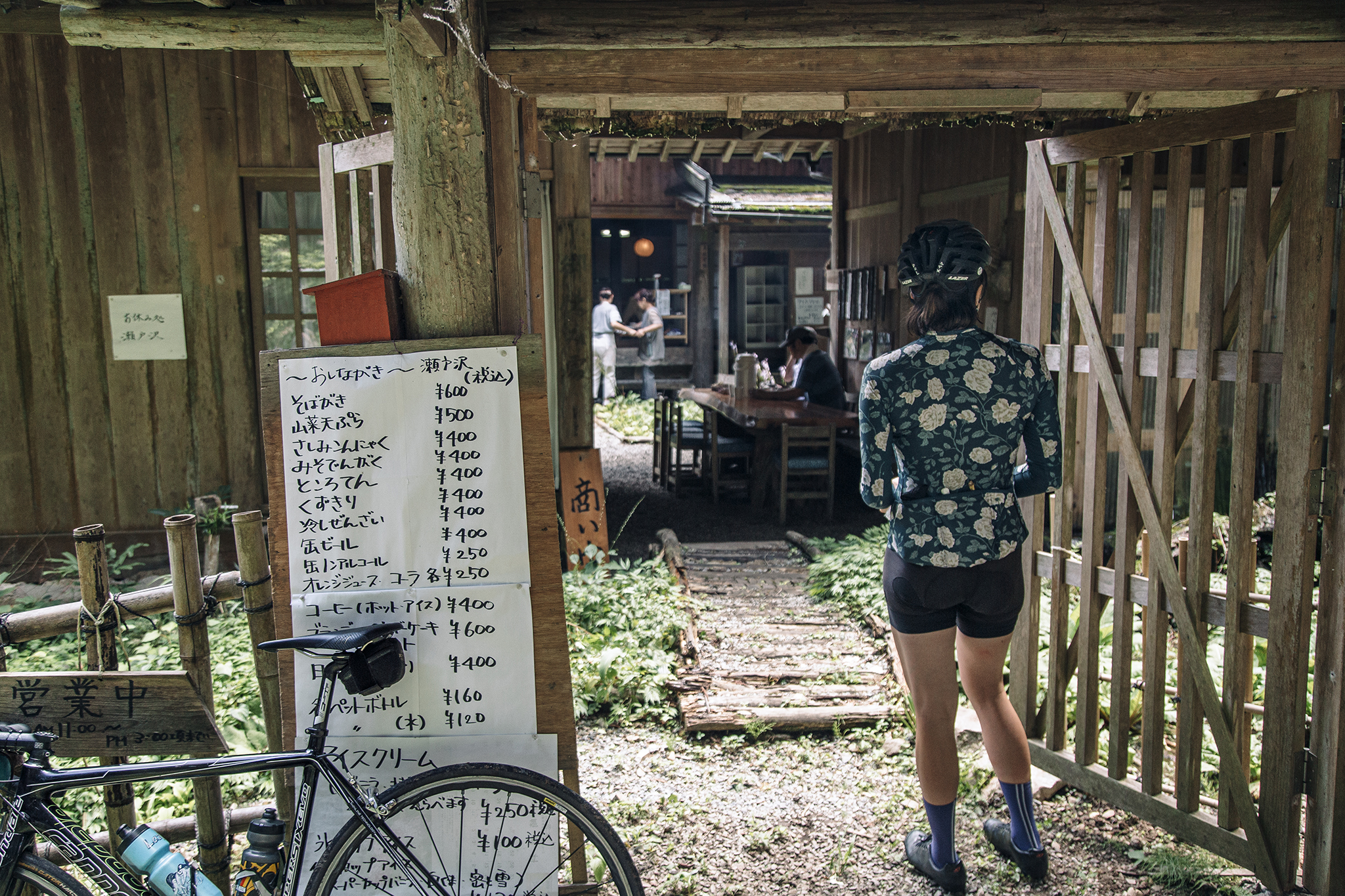

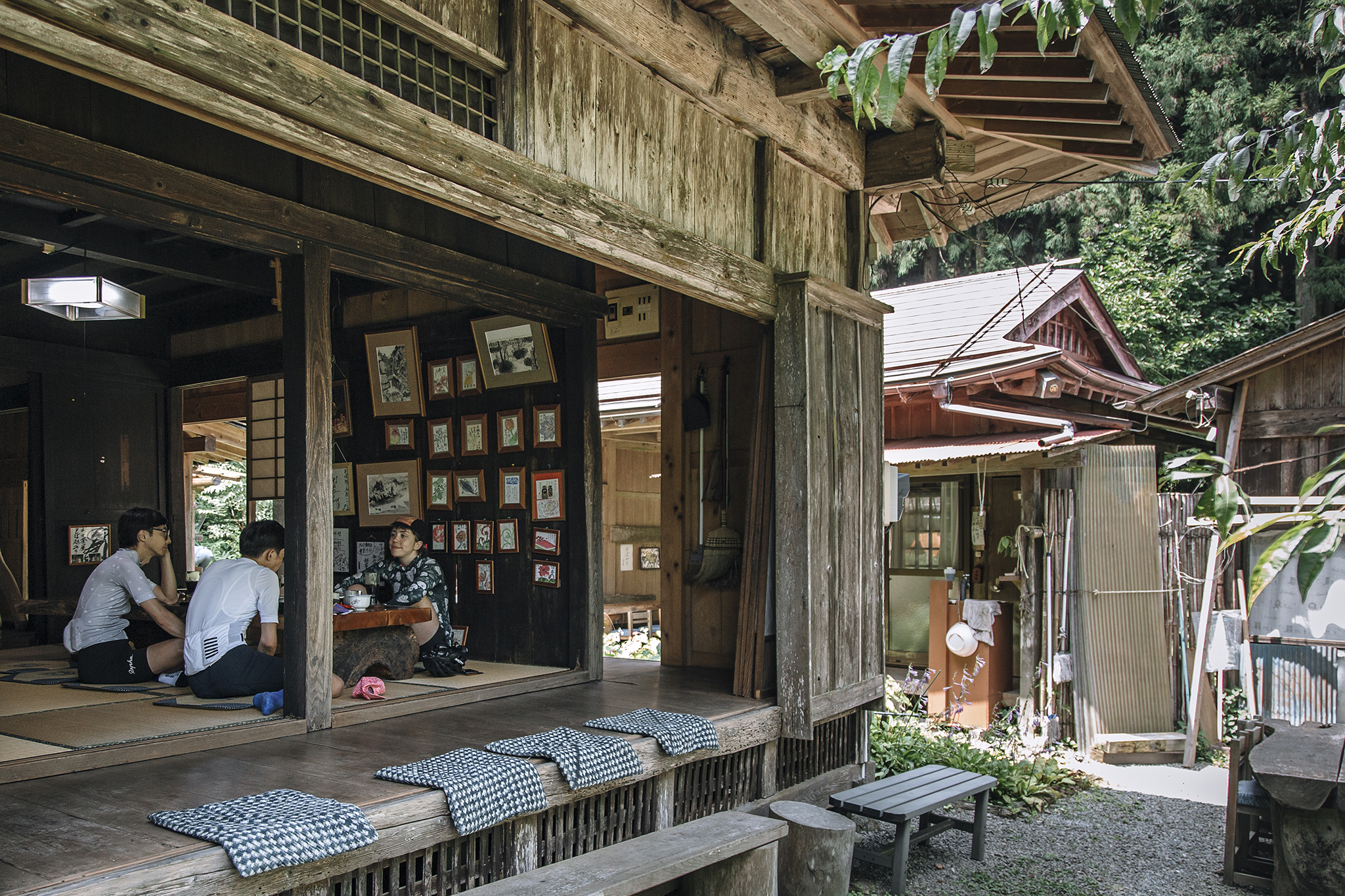
Back on two wheels, we descend the road we’ll eventually take to our climb, a worthwhile detour to explore Kanotoiwa (Kanoto Rock) which might be translated as the door of gods. The canyon is a beautiful distraction from the road and one of the best ways to cool down from the heat of the day. There are a couple of natural water slides often enjoyed by cyclists. Riding during the summer months in Japan your kit will dry in no time, only to be soaked once more on the next climb through a combination of heat, humidity and exertion.
With the threat of rain, our procrastination subsides and we head to the next part of our ride and the main climbs of the day. You’re likely to see other cyclists and at the top we talk with a solo rider, sharing routes from the day. We’re given warning that the road along the descent here has some broken patches and gravel, so rider beware!
With the threat of rain, our procrastination subsides and we head to the next part of our ride and the main climbs of the day. You’re likely to see other cyclists and at the top we talk with a solo rider, sharing routes from the day. We’re given warning that the road along the descent here has some broken patches and gravel, so rider beware!



The final climb is the popular Tomin no Mori, or Citizen’s Forest. All of the previous climbs and the majority of the route is along narrow, single-lane roads with only occasional traffic. Mostly just quiet stretches of moss covered walls, often under a canopy of trees. Tomin no Mori is much more active and the final way out of the Okutama enclave, leading to the highest road in Tokyo at over 1000m. After some fairly serious climbing we take lunch at the Tomin no Mori café. Here you can get local snacks and freshly made bowls of ramen, udon and other Japanese staples.
People always break at Tomin no Mori and forget that the climb is not yet over. The highest point is Kazahari pass and then there’s 13km of descending down to Lake Okutama, fed by the Tama river and an important source of water for Tokyo. From here it’s a long, winding, tunnel-filled road to the end of the ride. As the backroad connection for two prefectures, this road is nestled between towering mountains and the upper reaches of the Tama River, and depending on the time of day, traffic can sometimes be heavy. Hugging the mountain along the left of the road and following its curves for a steady downhill sprint towards our goal at Sawanoi, Tokyo’s oldest sake brewery which is conveniently located next to the remote Sawai train station.
People always break at Tomin no Mori and forget that the climb is not yet over. The highest point is Kazahari pass and then there’s 13km of descending down to Lake Okutama, fed by the Tama river and an important source of water for Tokyo. From here it’s a long, winding, tunnel-filled road to the end of the ride. As the backroad connection for two prefectures, this road is nestled between towering mountains and the upper reaches of the Tama River, and depending on the time of day, traffic can sometimes be heavy. Hugging the mountain along the left of the road and following its curves for a steady downhill sprint towards our goal at Sawanoi, Tokyo’s oldest sake brewery which is conveniently located next to the remote Sawai train station.


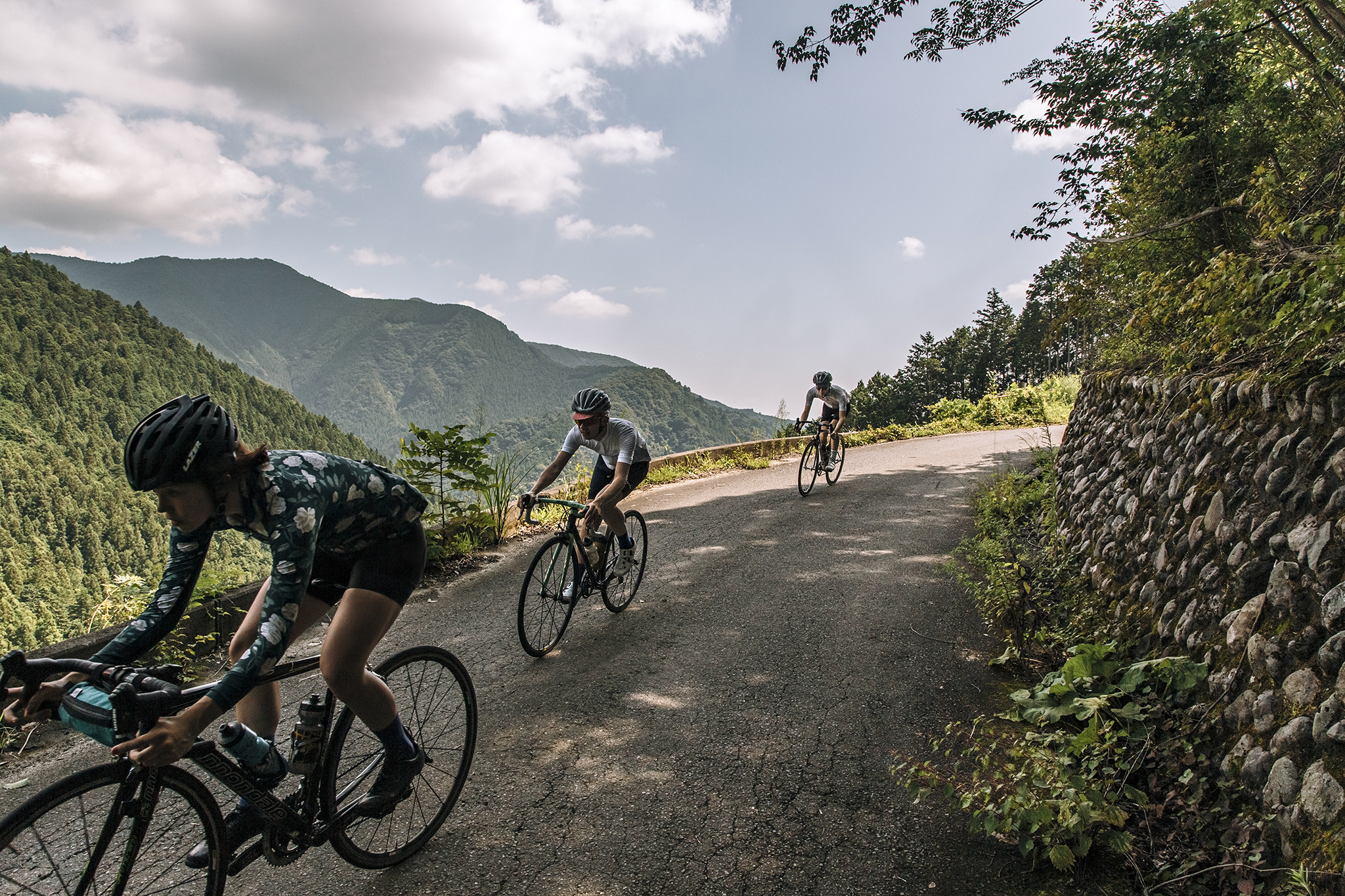
The final climb is the popular Tomin no Mori, or Citizen’s Forest. All of the previous climbs and the majority of the route is along narrow, single-lane roads with only occasional traffic. Mostly just quiet stretches of moss covered walls, often under a canopy of trees. Tomin no Mori is much more active and the final way out of the Okutama enclave, leading to the highest road in Tokyo at over 1000m. After some fairly serious climbing we take lunch at the Tomin no Mori café. Here you can get local snacks and freshly made bowls of ramen, udon and other Japanese staples.
People always break at Tomin no Mori and forget that the climb is not yet over. The highest point is Kazahari pass and then there’s 13km of descending down to Lake Okutama, fed by the Tama river and an important source of water for Tokyo. From here it’s a long, winding, tunnel-filled road to the end of the ride. As the backroad connection for two prefectures, this road is nestled between towering mountains and the upper reaches of the Tama River, and depending on the time of day, traffic can sometimes be heavy. Hugging the mountain along the left of the road and following its curves for a steady downhill sprint towards our goal at Sawanoi, Tokyo’s oldest sake brewery which is conveniently located next to the remote Sawai train station.
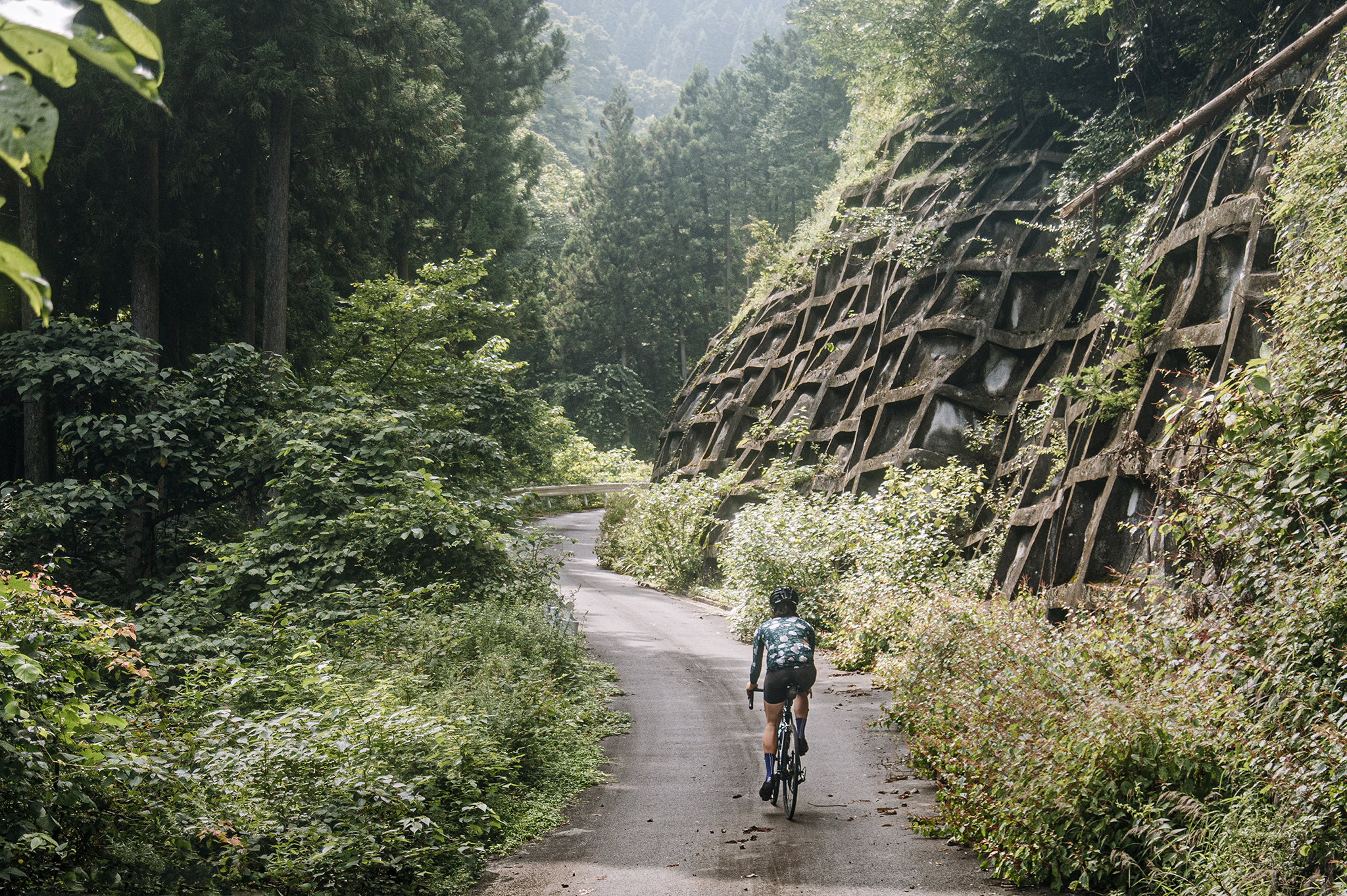


There are two options at the brewery, most cyclists I know opt for their shop next door that sells sake by the bottle and provides a small kaku-uchi (standing bar) for a cheaper experience sharing with friends. However, for those not wanting to commit to a full bottle and would rather taste a variety of sake, there is also a restaurant and more casual outdoor patio across from the brewery, next to the river which closes a little earlier. Apart from alcohol, they have oden and other Japanese dishes as well as amazake, a fermented rice drink with little to no alcohol. Autumn is one of the best times to visit, when the sake is fresh and the maple trees are a brilliant red.
An important note for tourists: it is illegal to ride a bike in Japan after consuming any amount of alcohol. So, if you do stop at the brewery, make sure your bike goes back into its travel bag and take the train home after drinking!
The train ride back on the Ome line along the Tama River is a relaxing end to the day. If you find yourself riding close to dark, you can also choose to end the ride at the much closer Okutama station for good beer and food, or one of the many other smaller stations along the river which all head back to central Tokyo.
An important note for tourists: it is illegal to ride a bike in Japan after consuming any amount of alcohol. So, if you do stop at the brewery, make sure your bike goes back into its travel bag and take the train home after drinking!
The train ride back on the Ome line along the Tama River is a relaxing end to the day. If you find yourself riding close to dark, you can also choose to end the ride at the much closer Okutama station for good beer and food, or one of the many other smaller stations along the river which all head back to central Tokyo.

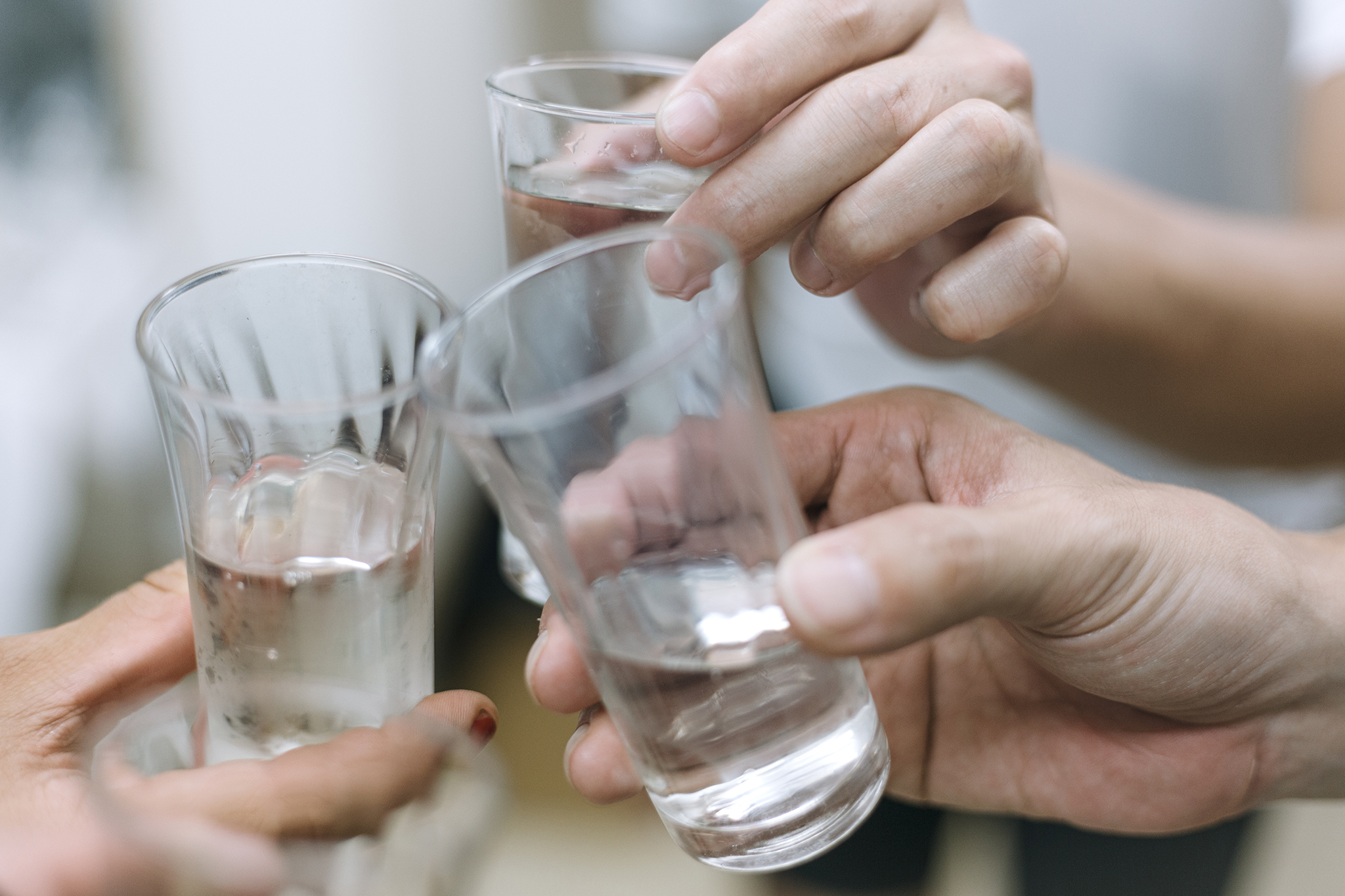



This story first appeared in Strava Stories